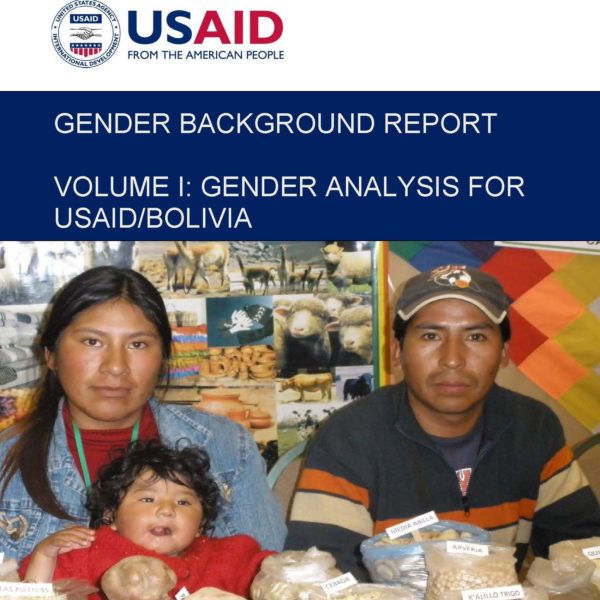In 2013 USAID/Bolivia will develop a new Country Development Cooperation Strategy (CDCS) in support of Bolivia’s National Development Plan. The two prospective development objectives (DOs) in health and environment are likely to focus on reducing the social and economic exclusion of historically disadvantaged Bolivian populations. Activities under the new strategy are likely to concentrate predominantly on Bolivia’s peri-urban and rural populations. As part of its background work for the development of its new CDCS, USAID Bolivia requested support from Office of Gender Equality and Women’s Empowerment for a two-volume background report that will provide the foundations for a gender assessment.
This report (Volume I) summarizes the gender disparities in key programmatic sectors in which USAID has been working, examines why they exist, and suggests some possible approaches to reduce inequalities. The gender analysis presented in this report is based on a thorough literature review, and discussions and interviews with individuals representing a wide range of governmental, civil society, and foreign assistance groups, as well as USAID’s current implementing partners. The primary objective is to identify gender-based inequalities and gaps within and across Bolivia’s diverse cultures and ecologies that adversely restrict women’s and men’s (girls’ and boys’) opportunities for economic and social development.

